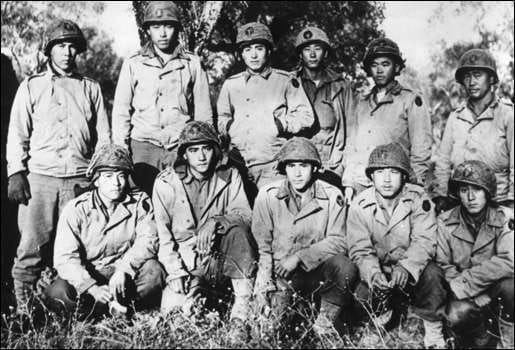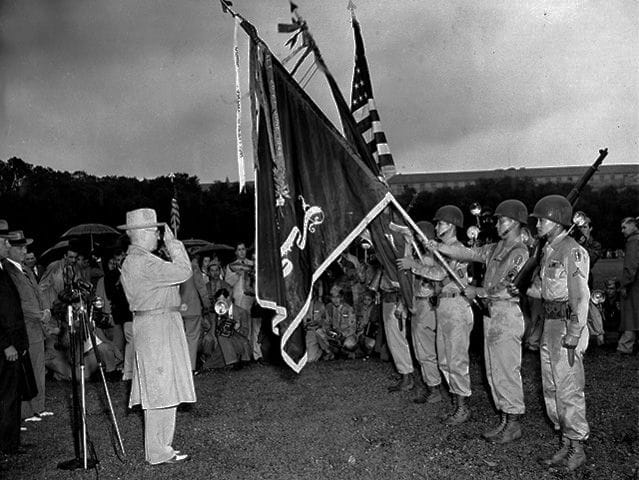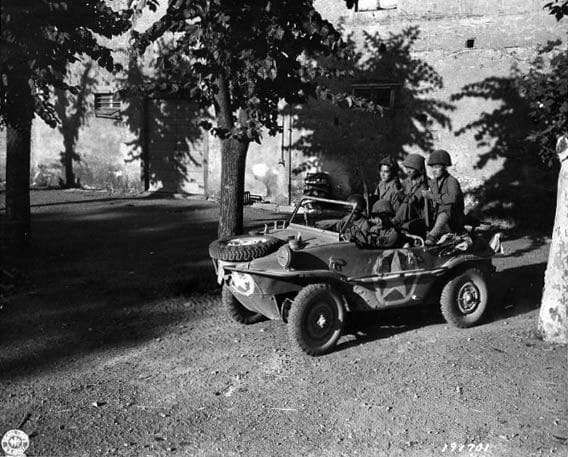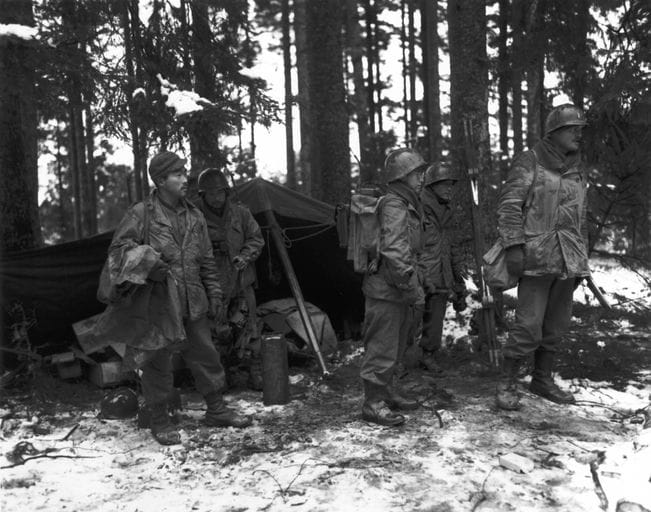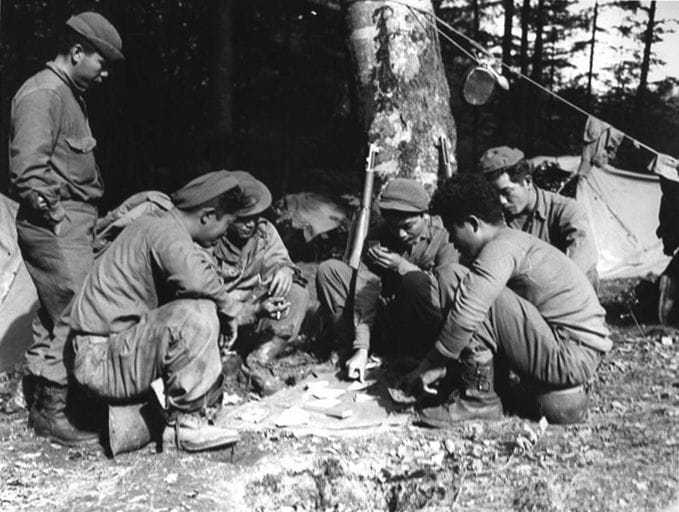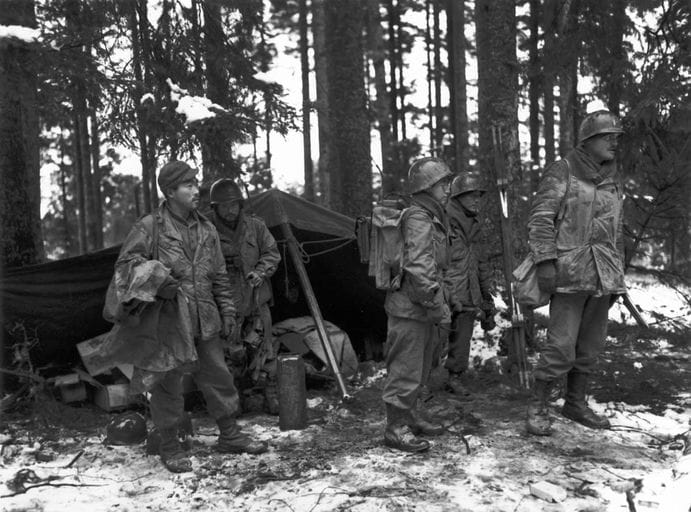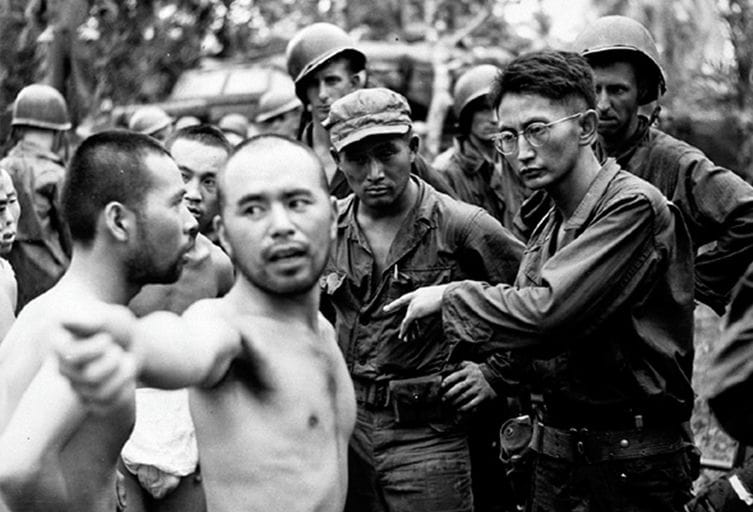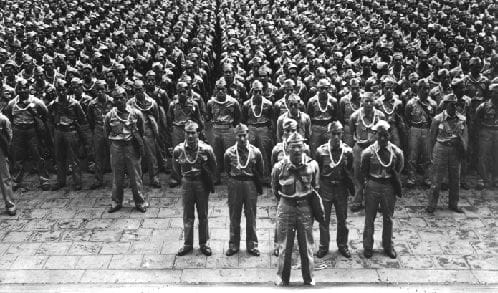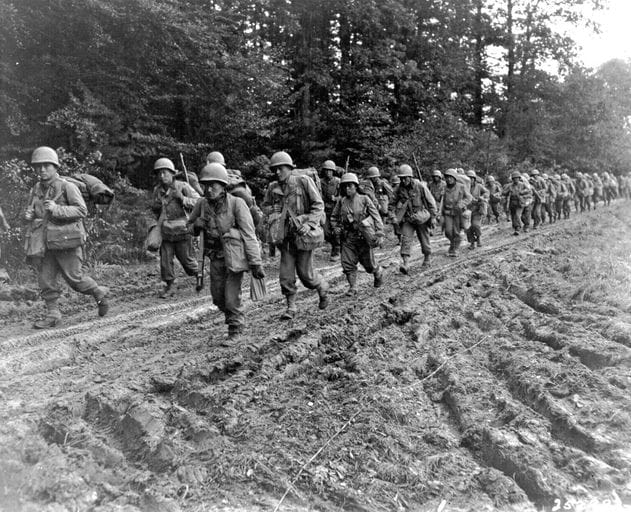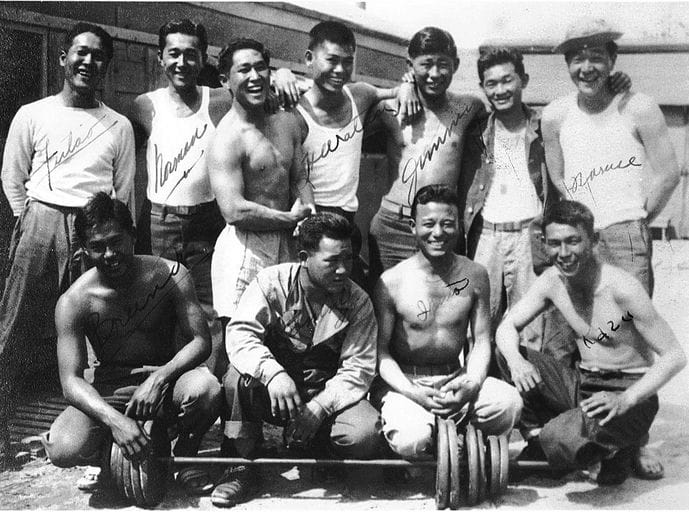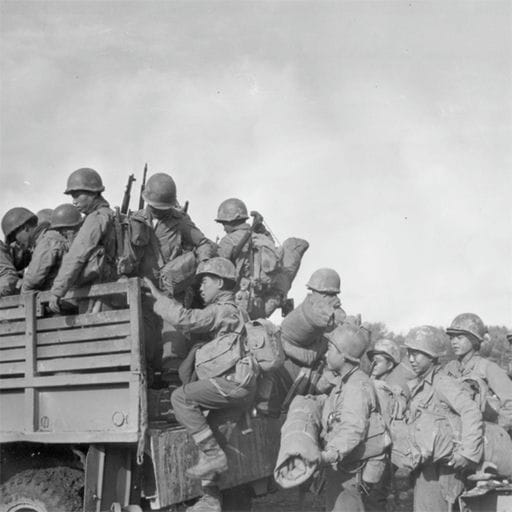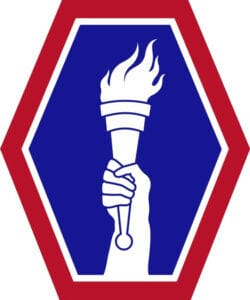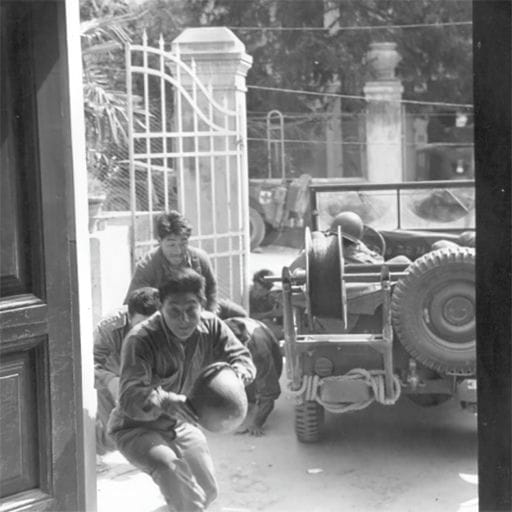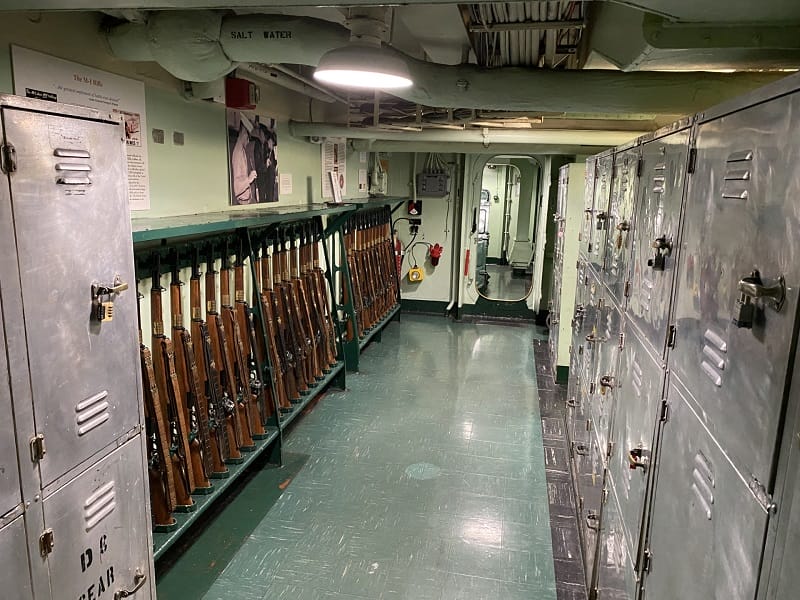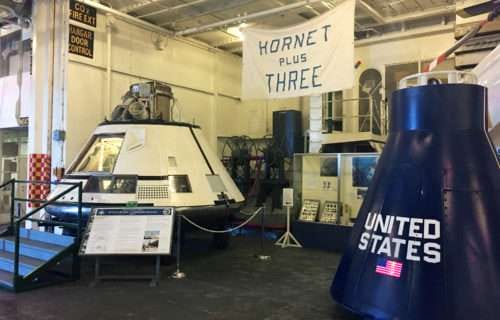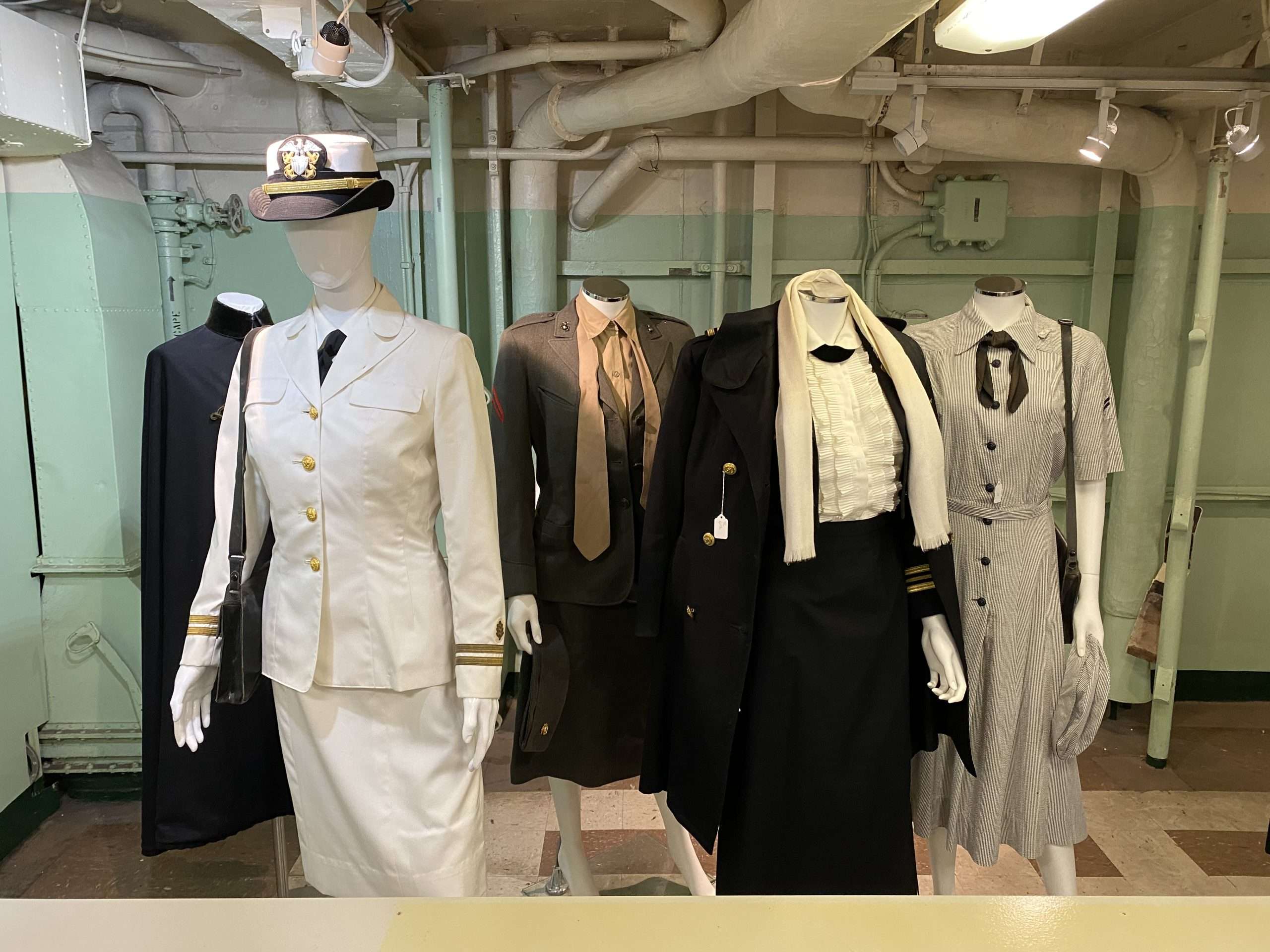This exhibit was installed by the Friends of the Nisei, a non-profit who worked with the Hornet Museum for this project. There are three main topics in these rooms: the 442nd Army Division, California’s Japanese-American internment camps, and the Military Intelligence Service.
After the attack on Pearl Harbor, xenophobic tensions became magnified as the United States prepared for a potential Japanese assault of the West Coast. Japanese-Americans became referred to as “security risks”. On February 19, 1942 President Roosevelt signed Executive Order 9066 directing the removal and internment of over 100,000 Americans of Japanese descent along the entire span of the Pacific Coast. Nearly 62% of Japanese-Americans interned in these camps were second generation Japanese-American United States Citizens, or Nisei. The conditions of the camps themselves were harsh, as barracks were lacking in privacy and indoor plumbing.
At the same time as these internment camps were in operation, the Army established the 442nd Regimental Combat Team, an Asian American unit comprised primarily of volunteer Nisei Japanese-Americans. The 442nd served in both the European and Pacific Theaters during WWII but are best known for their service in Europe. They participated in one of the costliest campaigns on the German Gothic Line: the rescue of the “Lost Battalion,” serving with uncommon distinction while combating racial prejudices on the home front. The 442nd landed in Italy in 1944 before joining the invasion of southern France. They rescued the “Lost Battalion” at Biffontaine, suffering over 800 casualties to rescue 211 members of the 1st Battalion which had been surrounded by German forces. By April 1945, they pushed into Germany and were one of the first Allied troops to release prisoners from the Dachau concentration camp. The 442nd is said to have suffered a casualty rate of 314% (as in, the average soldier was injured more than three times), a statistic gained from the 9,486 Purple Hearts earned from some 3,000 in-theater personnel.
The Military Intelligence Service was a World War II U.S. military unit, primarily composed of Japanese-American Nisei who were trained as linguists. Graduates of the MIS language school were attached to other military units to provide translation and interrogation services. Near the end of the war with Japan, the curriculum shifted to focus more on Japanese civil affairs to assist with occupation and rebuilding after the war. The MIS was established in November 1941 and first operated at Crissy Field in San Francisco before later moving to Savage, Minnesota in 1942. MIS members attached to the joint Australian/American Allied Translator and Interpreter Service were instrumental in deciphering and translating the “Z Plan,” an important captured document that described Japanese plans for a counterattack in the central Pacific.

